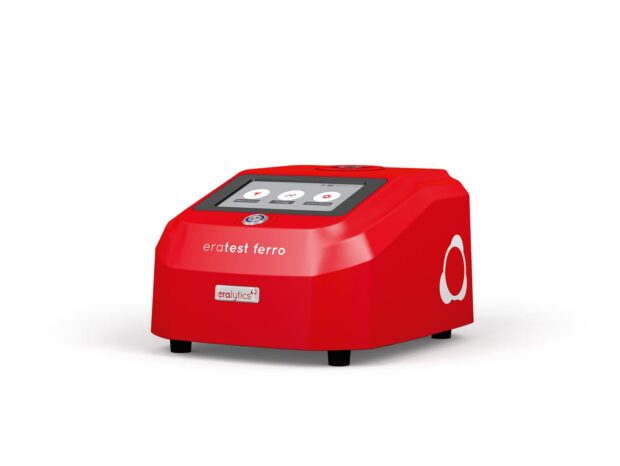Standard Test Method for Ferrous Debris Quantification.
Get more information about the standard at ASTM D8120-17.
ASTM D8120 is a standard test method for the quantitative determination of ferrous debris concentration in lubricants and greases. This method employs a magnetometer apparatus to measure ferrous particles, providing direct readings without the need for complex calculations. Accurate assessment of ferrous debris is crucial for monitoring machinery wear and ensuring the reliability of mechanical systems.
Details
The ASTM D8120 test method quantifies ferrous debris concentrations ranging from 0 mg/kg to 10,000 mg/kg (1% by mass) or higher. The method is suitable for in-service lubricants and greases at any stage of degradation. A sample of lubricant or grease is placed into a magnetometer apparatus, which detects and measures the concentration of ferrous debris.
Industries and applications
ASTM D8120 is widely applied in the following industries and applications:
- Oil analysis laboratories: Utilize this method to assess lubricant conditions and detect abnormal wear, providing essential data for maintenance decisions.
- Rotating machinery maintenance: Applies to equipment such as pumps, reducers, and bearings, where monitoring ferrous debris helps in early fault detection and prolongs machinery lifespan
- Hydraulic systems: Ensures the cleanliness and proper functioning of hydraulic fluids, preventing system failures due to particulate contamination
- Engine and transmission monitoring: Assists in evaluating wear in engines and transmissions, crucial for automotive, aerospace, and heavy machinery sectors
- Wind turbine maintenance: Supports the renewable energy industry by monitoring gearbox and bearing conditions in wind turbines, enhancing reliability and performance
- Mobile equipment and vehicles: Benefits fleets of trucks, buses, and construction equipment by facilitating routine monitoring and maintenance of critical components
- Military equipment: Ensures the operational readiness of defense machinery by detecting wear-related issues before they lead to critical failures
